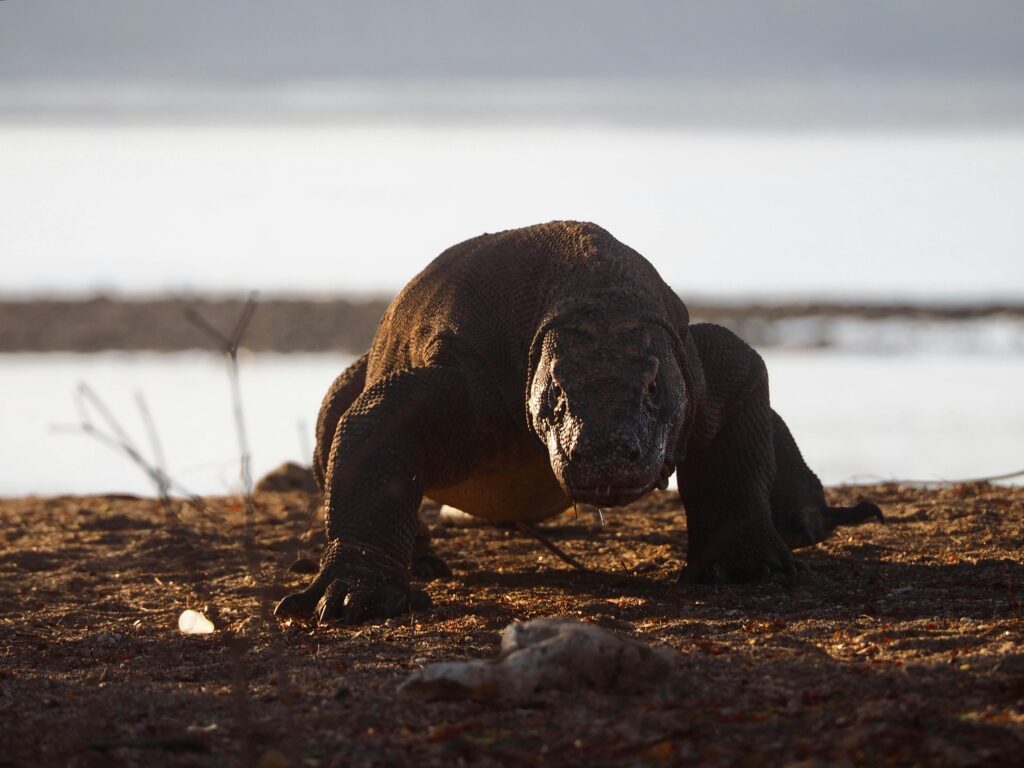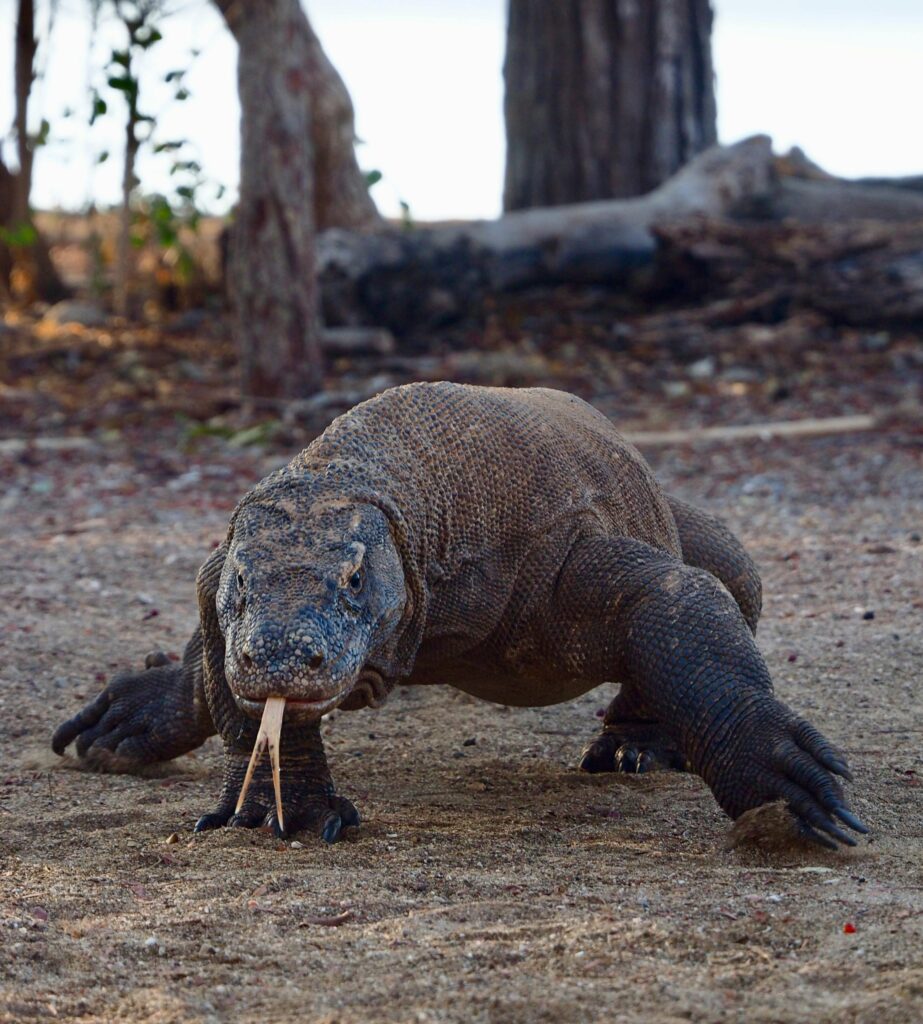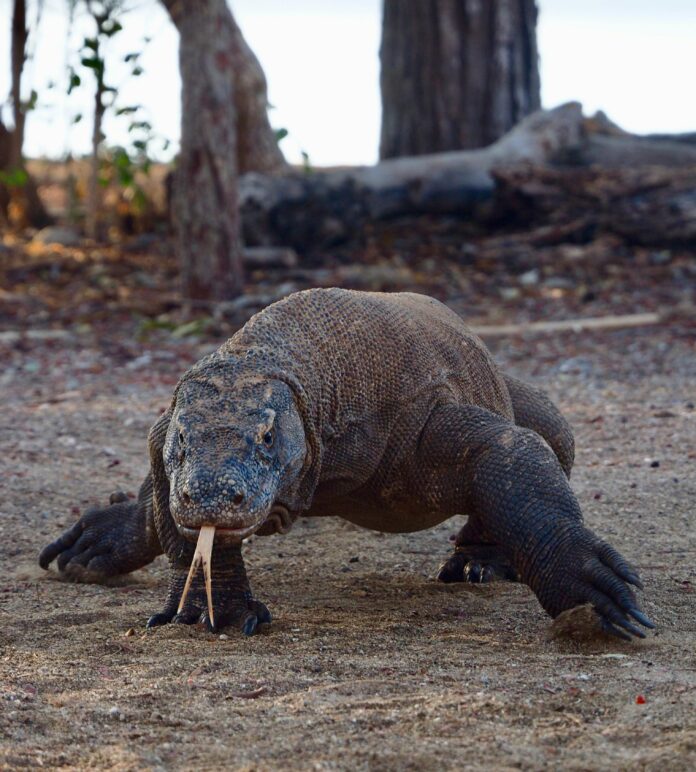
Komodo Dragon Speed
Komodo dragons are the largest lizards in the world, and they live on islands in Indonesia such as Komodo, Rinca, Flores and Gili Motang. These gigantic reptiles can be over 10 feet long and weigh up to 200 pounds, making them one of nature’s most fascinating creatures. But what about their speed? Can these giant lizards move fast, and how does their speed help them survive in the wild? Let’s explore these questions to understand the incredible world of the Komodo dragon.
How Fast Can Komodo Dragons Run?
Komodo Dragon Speed – Komodo dragons are not just big and powerful; they can also be surprisingly fast. On land, a Komodo dragon can run up to 12 miles per hour (20 kilometers per hour) for short distances. This might not seem very fast compared to some animals, but for a creature of their size, it is impressive. They use this speed to catch prey and defend themselves from threats.
Speed in Hunting
Komodo dragons are top predators in their environment. Their diet includes a variety of animals such as deer, pigs, and even water buffalo. They rely on both stealth and speed to hunt. Here’s how they use their speed in hunting:
- Stalking Prey: Komodo dragons are patient hunters. They can spend hours quietly watching their prey, waiting for the perfect moment to strike.
- Quick Chase: When the moment is right, they use their powerful legs to burst into a quick chase. Their speed helps them close the distance to their prey quickly.
- Ambush Hunting: Sometimes, Komodo dragons hide in tall grass or bushes. They wait until the prey is very close before launching a surprise attack, using their speed to catch it off guard.
Komodo Dragon Speed in Defense
Speed is not just for hunting; it’s also vital for defense. Although adult Komodo dragons have few natural enemies, younger dragons are at risk from larger predators, including adult Komodos. Young dragons use their speed to escape danger. When threatened, they can quickly climb trees or run to safety.
Physical Adaptations for Speed
Several physical traits help Komodo dragons achieve their surprising speed. Let us take a closer look at these adaptations.
- Strong Legs: Komodo dragons have powerful, muscular legs that give them a burst of speed. Their legs are designed for both walking long distances and sprinting.
- Long Tail: Their long, muscular tail helps with balance, especially when they are running. It acts like a counterbalance, allowing them to make sharp turns and maintain stability.
- Clawed Feet: Komodo dragons have sharp claws that provide traction on different surfaces. This helps them run faster and climb trees when needed.
- Flexible Spine: Their spine is flexible, which allows for greater agility. This flexibility helps them twist and turn quickly during a chase.
Comparing Komodo Dragon Speed to Other Animals
To better understand how fast Komodo dragons are, let’s compare their speed to other animals:
- Cheetah: The cheetah is the fastest land animal, capable of reaching speeds up to 70 miles per hour (113 kilometers per hour). While a Komodo dragon cannot match this speed, it is still fast for its size.
- Human: The average human running speed is around 8 miles per hour (13 kilometers per hour). A Komodo dragon can easily outrun most people.
- Dogs: Many dog breeds can run between 15-20 miles per hour (24-32 kilometers per hour). This is slightly faster than a Komodo dragon, but not by much.
Komodo Dragon Speed in Water
Komodo dragons are also good swimmers. They can swim between islands in their habitat, using their powerful tails to propel themselves through the water. Although they are not as fast in water as they are on land, their swimming ability is crucial for their survival, allowing them to hunt and explore new territories.
Speed and Survival: The Bigger Picture
Speed is just one part of the Komodo dragon’s survival strategy. Here are some additional factors that play a role:
- Venomous Bite: Komodo dragons have venom glands in their mouths. When they bite their prey, the venom causes shock and prevents blood from clotting. This weakens the prey, making it easier to catch.
- Keen Senses: They have an excellent sense of smell, which helps them locate prey from miles away. Their forked tongue flicks out to taste the air, detecting chemical signals.
- Tough Skin: Their skin is covered in tough scales, providing protection against injuries and attacks.
Interesting Facts About Komodo Dragon Speed
Here are some interesting facts that make Komodo dragons even more fascinating:
- Ancient Lineage: Komodo dragons are part of an ancient lineage of reptiles that dates back millions of years. They are commonly referred to as “living fossils.”
- Solitary Creatures: Komodo dragons are generally solitary, coming together only to mate and eat. This solitary nature helps them avoid conflicts with other dragons.
- Intelligent Hunters: They are known to be intelligent, displaying problem-solving abilities when hunting or finding food.
Conservation and Threats
Komodo dragons are classified as vulnerable by the International Union for Conservation of Nature (IUCN). Human activities, natural disasters, and habitat loss all pose threats to their populations. Conservation efforts are critical to preserving these unique creatures and their habitats.
- Habitat Protection: Preserving the natural habitats of Komodo dragons is crucial. Efforts include creating protected areas and national parks.
- Anti-Poaching Measures: Implementing strict anti-poaching laws and regulations helps prevent illegal hunting of Komodo dragons and their prey.
- Research and Monitoring: Ongoing research and monitoring programs help scientists understand Komodo dragon behavior, health, and population dynamics.
Conclusion
Komodo dragons are graceful creatures with impressive speed and agility despite their large size. Their ability to run at speeds up to 12 miles per hour and their swimming skills make them great hunters and survivors. Understanding the role of speed in their lives gives us a deeper appreciation of these ancient reptiles. Conservation efforts are essential to ensure that Komodo dragons continue to thrive in their natural habitats for future generations to appreciate and study.

FAQs About Komodo Dragon Speed
1. How fast can a Komodo dragon run?
A Komodo dragon can run up to 12 miles per hour (20 kilometers per hour) for short distances. This speed helps them catch prey and escape from threats, despite their large size.
2. Are Komodo dragons dangerous to humans?
Yes, Komodo dragons can be dangerous to humans. They have a powerful bite, sharp claws, and venom that can cause serious injury or death. It’s important to keep a safe distance from them in the wild.
3. How do Komodo dragons use their speed in hunting?
Komodo dragons use their speed to ambush and chase prey. They stalk their prey quietly and then burst into a quick chase when the moment is right. Their speed, combined with their powerful bite and venom, makes them effective hunters.
4. Can Komodo dragons swim?
Yes, Komodo dragons are good swimmers. They can swim between islands in their habitat, using their powerful tails to propel themselves through the water. Swimming helps them hunt and explore new territories.
5. What are the primary threats to Komodo dragons?
The main threats to Komodo dragons include habitat loss, natural disasters, and human activities such as poaching and encroachment. Conservation efforts, including habitat protection and anti-poaching measures, are crucial to ensure their survival.

